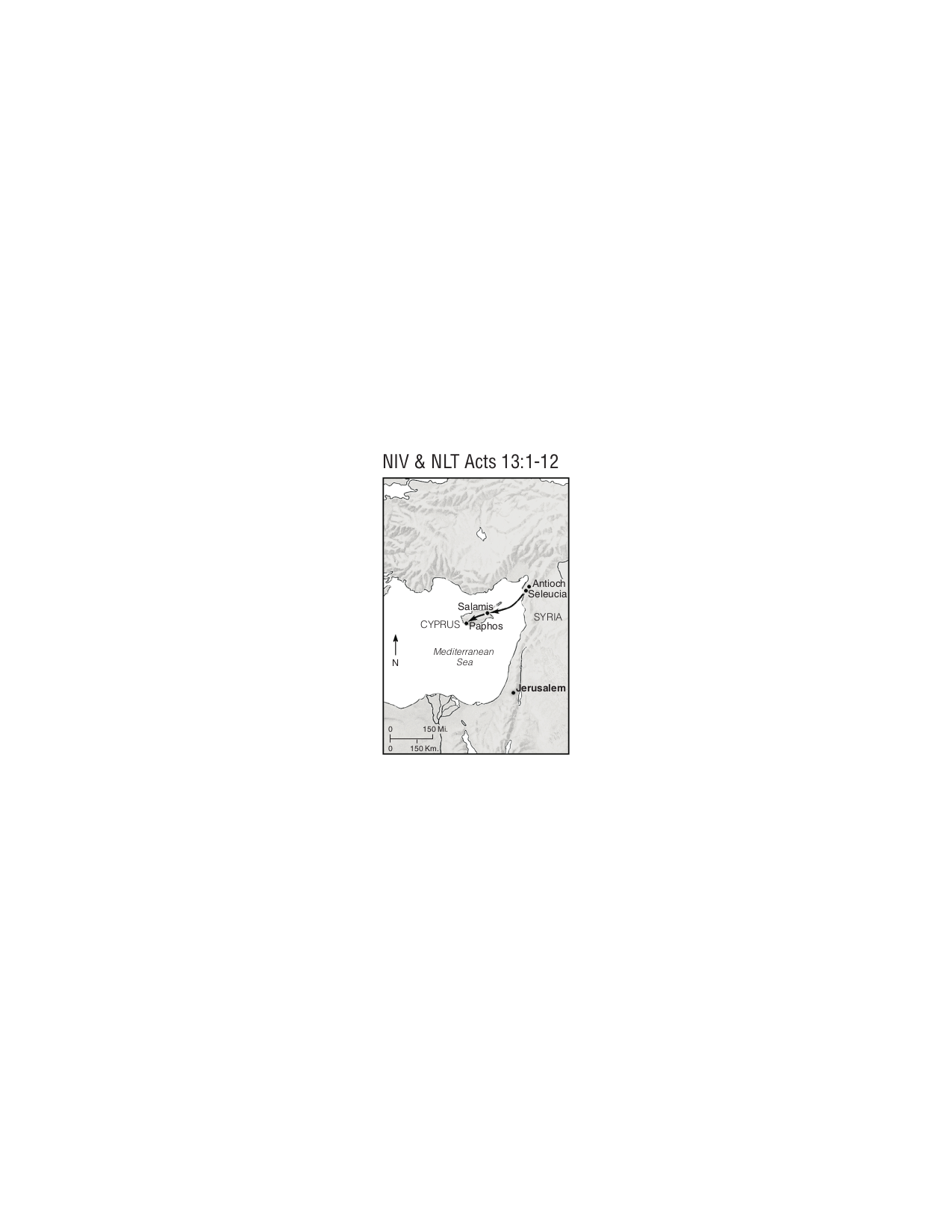Open Bible Data Home About News OET Key
A B C D E F G H I J K L M N O P Q R S T U V W XY Z
Tyndale Open Bible Dictionary
Intro ← Index → ©
CYPRUS
Island country located in the northeastern Mediterranean Sea, 50 miles (80.5 kilometers) south of Turkey (Asia Minor), 70 miles (112.6 kilometers) west of Syria, and 245 miles (394.2 kilometers) north of Egypt. This island, about 110 miles (177 kilometers) long and 50 miles (80.5 kilometers) wide, supports the Kyrenia and Troodas Massif mountain ranges separated by the fertile Mesaoria Plain. A narrow strip of land 40 miles (64.3 kilometers) long and 5 miles (8 kilometers) wide extends from the northeastern part of the island. Cyprus is rimmed with a number of natural harbors. In antiquity these harbors provided a strategic meeting place of sea routes from Asia Minor, Syria, Palestine, and Egypt. The Cypriot copper mines, though now largely depleted, have long been a source of revenue for its inhabitants.
During the Bronze Age (late fourth–second millennia BC), Cyprus experienced an increased growth in population and economic importance among the Mediterranean communities. The island at that time was named Alashiya, as attested in the ancient documents of Ebla (24th century BC), Mari (18th century BC), Ugarit, and Tel el-Amarna (14th century BC). Elishah, an OT name for this island, is perhaps identifiable with the extrabiblical Alashiya (cf. Ez 27:7). Alashiya (Cyprus) established a network of trade with Syria, Palestine, and Egypt and became known for its exports, especially copper, oil, wood, and pottery. Pieces of Alashiyan pottery have been found at over 50 sites in Egypt, 25 sites in Palestine, and 17 sites in Syria. The ancient texts of Ebla, Mari, and Amarna record the business transactions involving Alashiya’s treasured copper. Toward the end of the Bronze Age (c. 1270–1190 BC) the Mycenian and Achaian Greeks began to migrate to Cyprus. During this period, the Greek colonies of Salamis and Paphos were founded.
In the ninth and eighth centuries BC, the Phoenicians settled their people and asserted their dominance on Cyprus. King Hiram II of Tyre (741–738 BC) included Cyprus in his royal domain, according to the inscriptions found at Mt Sinoas. Kition, near modern Larnaka, was a Phoenician settlement whose inhabitants were called Kittim. The Hebrews named the whole island Kittim (Nm 24:24, KJB “Chittim”) and eventually referred to any maritime country by this name (Jer 2:10; Dn 11:30; 1 Macc 1:1). Isaiah announced that from the ports of Kittim (Cyprus), the reports of Tyre’s destruction would be confirmed to its homeward-traveling sailors (Is 23:1, 12).

The First Missionary Journey: To Cyprus
The leaders of the church in Antioch chose Paul and Barnabas to take the gospel westward. Along with John Mark, they boarded ship at Seleucia and set out across the Mediterranean for Cyprus. They preached in Salamis, the largest city, and went across the island to Paphos.
Assyria, rising as the superior power in the Near East during the eighth and seventh centuries BC, made Cyprus one of its tributaries. The stele of King Sargon II (721–705 BC) records the tributes received by seven kings of Cyprus. The prism of Esarhaddon (c. 670 BC) registers ten Cypriot kings with their cities. During the Assyrian occupation, Cyprus was called Iadnan. After the dissolution of the Assyrian Empire, Cyprus was governed by Amasis, king of Egypt (569–527 BC), and later by King Cambyses II of Persia (529–522 BC).
After Alexander the Great’s decisive defeat of the Persian army at Issus in 333 BC, Cyprus sent 120 ships to help support his siege against Tyre. The Ptolemies of Egypt (a subdivision of the Greek Empire) gained possession of the island after Alexander’s death in 323 and retained control of Cyprus from 294–258 BC. This period brought relative peace and prosperity to the island. Cyprus, meaning copper in Greek, was the name assigned to it.
Cyprus was annexed to Rome in 58 BC, and Cicero was appointed its governor in 52. In 22 BC Rome made Cyprus into a senatorial province; Sergius Paulus was selected as its proconsul in AD 46. Later, Hadrian suppressed a violent Jewish revolt in 117, after which he banished all Jews from the island.
In the NT, Cyprus is first mentioned as the birthplace of Barnabas (Acts 4:36). Later, Jewish believers sought refuge at Cyprus from the persecutions that arose in Jerusalem on account of Stephen (11:19-20). On Paul’s first missionary journey he and Barnabas set sail from Seleucia, crossing to Cyprus before going on to Asia Minor (c. AD 47). Landing at the eastern seaport of Salamis, they gradually made their way westward across the island until they reached the western harbor town of Paphos. Here they met Bar-Jesus, the false prophet, and converted the Roman proconsul Sergius Paulus. From Paphos, Paul and Barnabas sailed to Asia Minor, docking at Perga in Pamphylia (13:4-13). Paul bypassed Cyprus on his second missionary journey; however, Barnabas with John Mark revisited the island (15:39). On Paul’s final trip to Jerusalem, Cyprus was used as a navigational landmark in crossing from Patara to Tyre (21:3). On the journey to Rome, Paul’s ship sailed under the lee of Cyprus to avoid rough winds (27:4).
